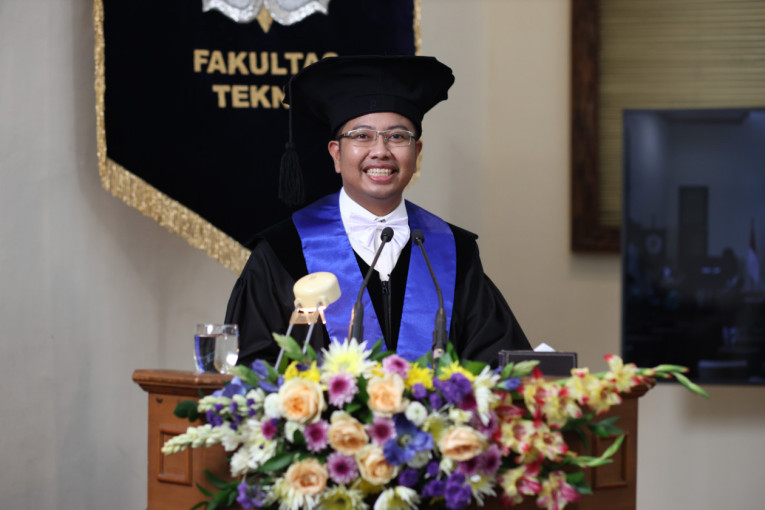
Dr. Ridi Ferdiana of the UGM Faculty of Engineering was promoted to a full professorship on Thursday (November 2) at the UGM Senate Hall.
In his inaugural speech entitled “Digital Sibling AI Platform, A Self-Documentation Platform Based on Artificial Intelligence,” he stated that the differences and communication difficulties today are aided by the presence of artificial intelligence.
Artificial intelligence, such as ChatGPT, can help humans reduce the complexity of communication and the differences in understanding.
Artificial intelligence can learn through machine learning, using data from human communication activities. Therefore, the higher the quality of the learned data, the more precise it can be in processing and resolving complex communication.
The professor of software engineering emphasized the need for a digital platform that can document human communication patterns, which can later be utilized by artificial intelligence to provide recommendations and assist decision-making.
“The digital sibling is a platform that can be used to document communication patterns at the most basic level, namely personal communication,” he said.
Professor Ferdiana’s concept of the digital sibling in his speech is unique compared to the IoT digital sibling. This is because the proposed digital sibling can be used when the representation is still present or already nonexistent.
Hence, as a distinction in the concept of the digital sibling in his speech, the professor named it Digital Sibling AI, abbreviated as DiSiAI, which leverages AI to self-document.
“Self-documentation is defined as an understanding to record, remember, and respond according to the characteristics possessed by the recorded object. The object recorded in this DiSiAI is a human being,” he explained.
Professor Ferdiana elucidated that the information structure of DiSiAI fundamentally consists of a set of structured and unstructured data processed into the basis of digital sibling knowledge.
In a virtual context, the digital sibling has the ability to communicate through several channels, namely voice communication, text communication, and visual communication.
Cognitive services form the core of the DiSiAI architecture. Cognitive services are cloud-based artificial intelligence commonly used in IoT devices or applications that require artificial intelligence.
Unlike machine learning-based development patterns, cognitive services are based on Platform as a Service (PaaS).
He noted that PaaS allows developers to avoid a series of machine learning to train expected artificial intelligence. Developers can use existing capabilities and add emotional (EQ) or knowledge-based (AI) capabilities to the DiSiAI platform.
Author: Agung Nugroho
Photographer: Donnie


